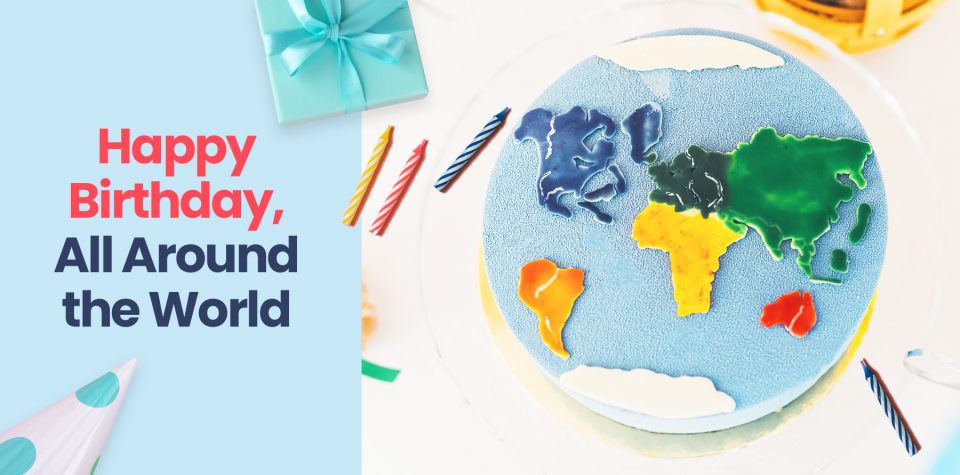
12 Birthday Celebrations Around the World
We are so happy to have been delighting kids and families for 12 years! We want you to celebrate with us as we shine a light on children’s birthday traditions around the world. Here are 12 ways children celebrate birthdays, with parties big and small, in different countries. (Some of these traditions are celebrated in more than just the country or culture highlighted.) See if there are some fun ideas you’d like to try for your child’s next birthday!
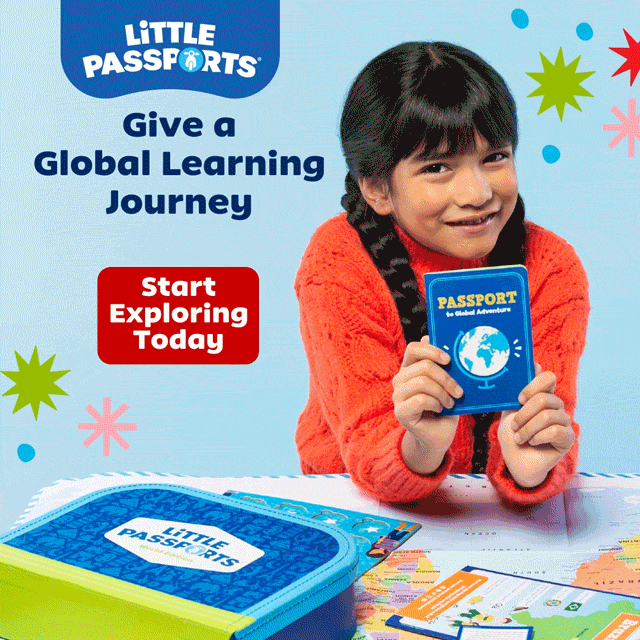
Japan
In Japan, not every birthday is celebrated, and not every birthday is celebrated on a child’s actual date of birth. In ancient times, children often died young, so children now participate in the 7-5-3 celebration (Shichi-go-san), held on November 15. The name refers to the ages of the children celebrated: Any child who reaches age three, boys who reach age five, and girls who reach age seven. They put on fine clothing and visit a religious shrine to give thanks for their health and a new year of life. They may also get gifts and candy.
Australia
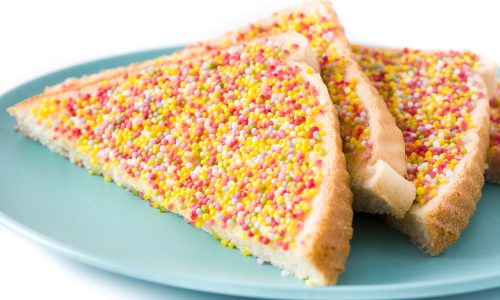
Because of Australia’s warm weather, most birthday parties are outdoor barbecues. Australians celebrate with cake and candles, balloons, and more. The best part: Children eat a special treat called fairy bread, which is a thick slice of white bread (not toasted) slathered in butter, then covered with candy sprinkles and cut into pizza-style triangles to eat. The sprinkles are called “hundreds and thousands” in Australia.
Brazil
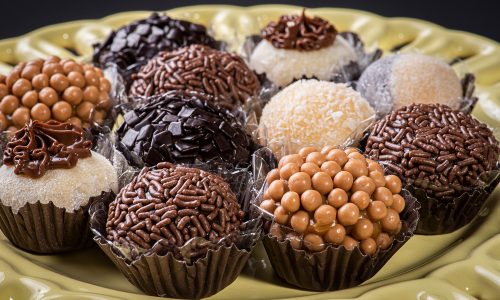
If you’re the birthday boy or girl, be prepared for some sore earlobes. Family, friends, and even strangers will pull at the ears of the birthday kid, one tug for each year old. The idea behind the custom is to wish that the child live so long that their ears touch the ground. It’s all worth it because of the big birthday feast, which focuses on brigadeiro, Brazil’s famous, simple, and delicious truffles. Make your own brigadeiros with our recipe!
Jamaica

A tradition that started out decades ago as a school day prank has become a huge birthday tradition throughout the Caribbean. As the birthday boy or girl goes through the day, there’s a party, cake, music, and games—and at least one good surprise dusting of flour from head to toe. Sometimes the birthday child is “floured” several times in a day, which only adds to the celebration.
Nepal

Children’s birthdays are a little more low-key than those in other cultures. But one tradition is fun, if a little messy. It’s considered good luck for the birthday girl or boy to have brightly colored rice yogurt smeared on their forehead for their birthday celebrations. There may be cake, there may be gifts, but there is almost always yogurt—colorful, delicious, sticky yogurt.

Mexico
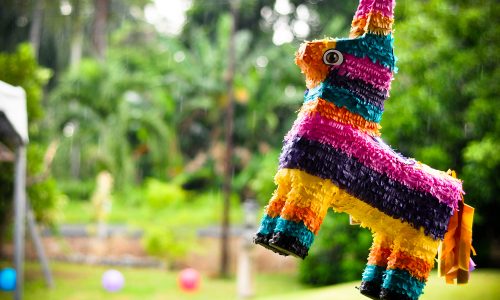
Mexican children celebrate their birthdays with a party—also called a fiesta—with food, treats, and songs. And the highlight of a birthday party is the candy-filled piñata. Children are blindfolded and swing bats or sticks at the piñata until it breaks open and all the treats spill out for everyone to enjoy. An extra-special birthday for girls in Mexico, and throughout Latin America, is their 15th, celebrated by the traditional quinceañera, which marks a girl’s transition to womanhood.
Denmark
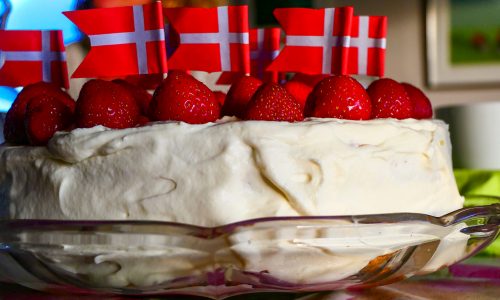
A Danish flag is flown outside the birthday child’s house. Parents and family members tiptoe into the child’s room when they are asleep, placing gifts all around the child’s bed. They wake up to a birthday bonanza! The Danish birthday child also gets a special birthday cake—a cake man or a cake lady—and the proper way to eat this is to chop off the head first and eat that.
China
Chinese birthday celebrations can be big events. The biggest birthday gala for a Chinese child happens at age one. Relatives and friends bring armfuls of small treasures to spread near the baby, like a pen, coins, flowers, a book, and so on. Whatever the baby grabs first is supposed to mark what he or she will be drawn to or do later in life. On other birthdays, as well as the lunar new year, the popular red envelope with money is given.
India
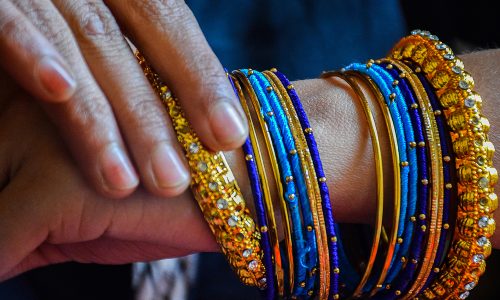
Birthdays in India are spiritual as well as secular celebrations. Indian children start their birthdays by visiting a shrine with their parents for blessings for the year ahead. That’s followed by a party of food, desserts, and dancing—and gifts of new clothes and accessories like bracelets that they can wear to school the next day.
The Netherlands

In Holland, birthday party guests greet the birthday boy or girl with the phrase “Gefeliciteerd,” meaning congratulations, and a series of alternating cheek kisses. After a meal and cake, the guests sing the traditional happy birthday song. Then, a few people shout “Hieperdepiep” and the rest of the crowd responds “HOERA!” Hip hip hooray!
Egypt
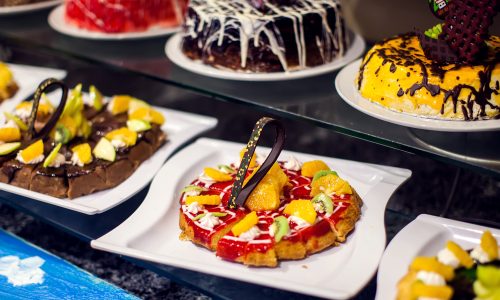
Family and friends are invited to a birthday party, or hafla, that includes singing and dancing. Decorations can be elaborate, usually a mix of flowers and fruit, which are symbols of growth and new life. Egyptians don’t send each other birthday cards, but they do typically celebrate with a cake.
Inuit Culture
In honor of Little Passports’ 12th birthday, we end our list of 12 traditions with one that celebrates a child’s 12th birthday. On the far north Canadian island called North Baffin, Inuit boys and girls who are turning 12 go out into the wilderness with their fathers to test their hunting skills and to acclimate to the harsh arctic weather. Sometimes a shaman is called to “open communication” between animals and humans. In this way, the Inuit pass down their important traditional skills to young people on the brink of adulthood.
If your child enjoyed learning about birthday traditions from around the world, check out our World Edition subscription. Every month, your child will discover a different country through traditions, foods, language, and more! Shop here.

